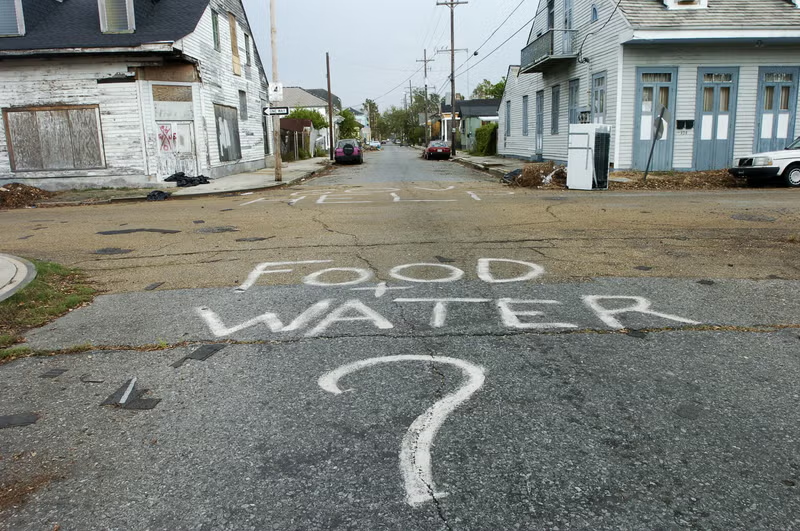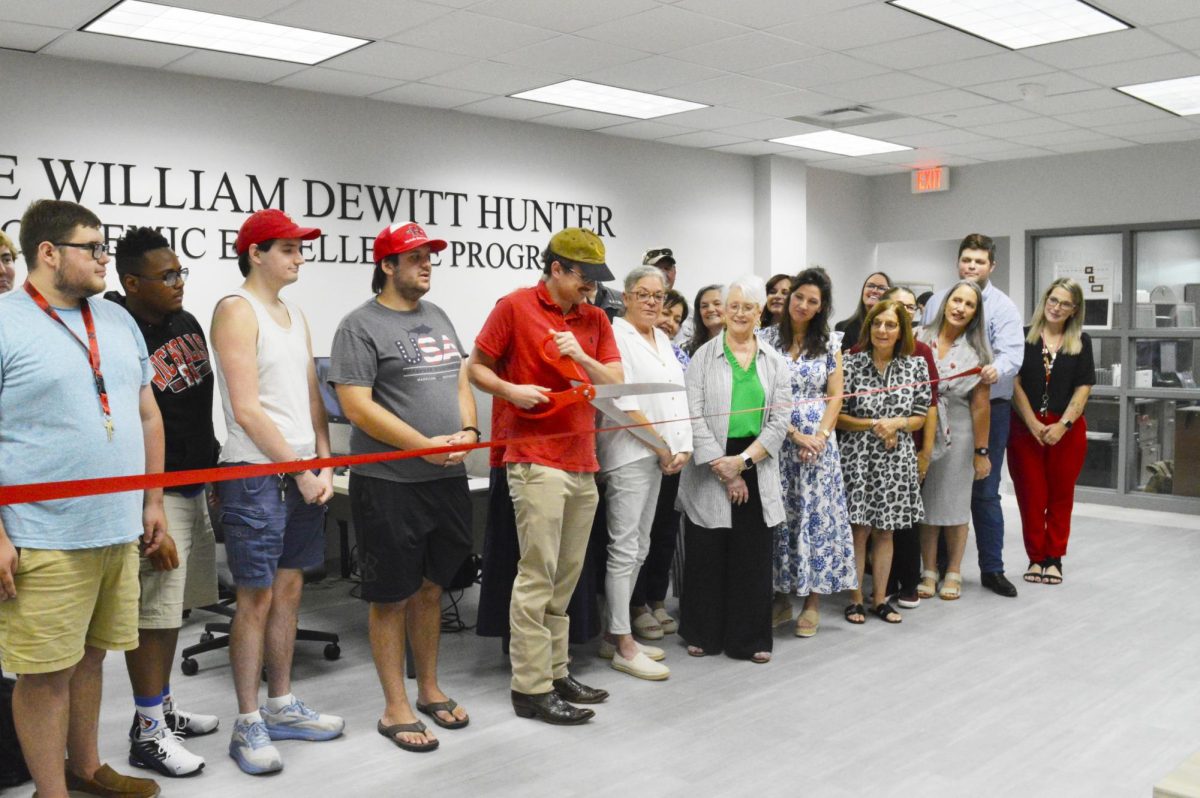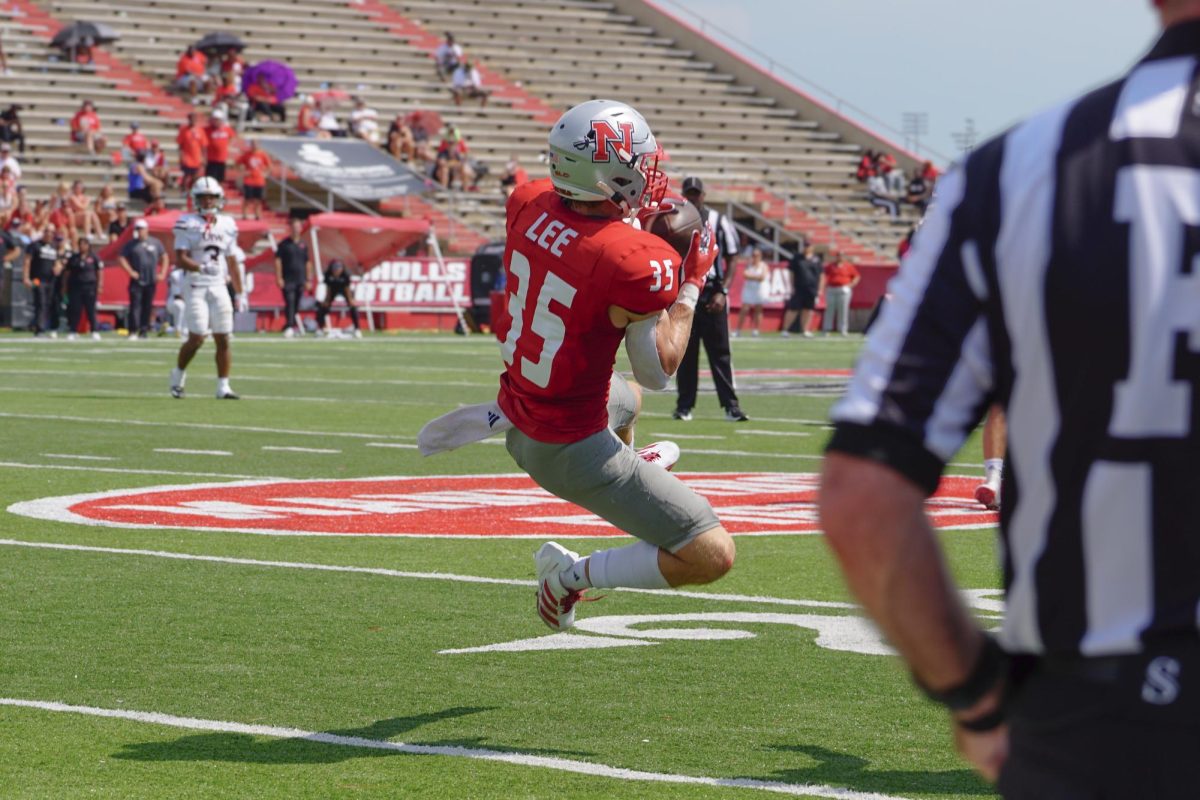Nicholls officials are optimistic that the state will reach an agreement with the owners of the land wanted for the recreation center, but 2007 will be the earliest students will enter the center. In the meantime, the University will purchase equipment for the future center to place in Stopher Gym and one of the racquetball courts.University President Stephen Hulbert said Nicholls submitted its purchase proposal for approximately 110 acres of the land to the east of the campus on Bowie Road last September.
“We went much of the year without any action,” Hulbert said. “During that time the state secured an additional appraisal and reviewed previous appraisals by the owner.”
Land negotiations
The state made an offer for the land approximately a month ago, Hulbert said. A Lafayette law firm is representing the Louisiana Division of Administration in negotiating with the landowners of Acadia Plantation. The landowners have since made a counter offer.
“We are near agreement on one portion of the land, and I think they’re seeking to negotiate on the larger portion,” Hulbert said. “For the first time in a year, I’m quite optimistic about the completion of the land purchase.”
Nicholls officials said there is still a gap between the price the state is willing to pay for the land and the price at which the landowners are willing to sell the land. Different sections of the 110 acres appear to have greater value than others because of their location, Hulbert said.
Because state institutions such as Nicholls cannot directly buy land, the state Division of Administration is handling the purchase. Hulbert said if the state and landowners cannot reach an agreement, an alternative by the state is to expropriate the land.
“I’m hopeful that the state and the owners of the property will come to an agreement, but I don’t know that for certain,” Hulbert said. “This may go the full route, including expropriation. I think one of the frustrations I have, we all have, is that Nicholls is not necessarily in control of the situation.”
Hulbert said the act of expropriation would actually take the land from the owners.
“If expropriation had to be initiated the land would become ours and could then be used for the purposes needed,” he said. “The rest, involving the courts and legal review, would be ongoing to determine the value the owners would be compensated for the land.”
Hulbert said the amount of time the state will wait before taking such actions will all depend on responses from the landowners.
“Acadia has every interest in seeing Nicholls grow and reach its potential for serving the community and student body,” Jake Giardina, one of Acadia Plantation’s co-owners, said. “However, it is important to understand that Acadia has already been in discussions with the state of Louisiana for nearly two years.”
Giardina said before Thanksgiving 2004, state officials indicated a proposal would be issued to the owners by Christmas 2004.
“Yet not until July 18, 2005-almost eight months later, did we receive any sort of formal proposal from their attorneys. Based on those lengthy delays which were certainly out of our hands, it is hard to say how quickly an agreement might be reached.”
Recreation center equipment
Bids have been released for cardiovascular and weight equipment for the future recreation center. This equipment will be placed in one of the racquetball courts and Stopher Gym until the center is built.
Michael Matherne, director of campus recreation, said the glass wall in the larger of the two racquetball courts in the rear of the Student Union will be removed in preparation for the new machines. The University is ordering 18 cardiovascular machines, including five treadmills, five elliptical cross trainers, two steppers and six bikes. Cardio-theatre will also be set up in the room. It will include six televisions, which will be hung on the north wall. Each machine will have a set of headphones and a transmitter by which to control which television to hear.
Matherne said the equipment bids are due Sept. 8, and then Nicholls will find out the delivery dates of the equipment. Within the next couple of weeks, the glass will be removed, he said.
The racquetball courts are currently open from noon until 9 p.m. Matherne hopes to expand hours once the equipment is in place and to hire an additional worker to wipe down the machines.
In addition, Matherne said 10 to 12 different pieces of equipment will be purchased for the weight room in Stopher Gym.
“We hope to manage the hours better (that Stopher is open) once we see what the prime times are for students,” Matherne said. “Students have been very understanding that good things are on the horizon. They’re just waiting to see that horizon.”
Matherne said funds for the equipment will come from the recreation center fee students are paying since the equipment will be relocated to the center once it is open. However, funds to disassemble the racquetball court will not come from the fee.
Alternative site
In February, Mike Davis, assistant vice president for business affairs for procurement and physical plant operations, told The Nicholls Worth that if the land purchase did not go through within approximately a month that an alternative site would be chosen.
Hulbert said the women’s soccer field has been chosen as the alternative site, but the University is not moving in that direction. The site would accommodate the current building plans but would not be adequate for future additions, he said. It would also not accommodate immediate recreational fields or parking close to the building.
“In light of the direction that the state is taking in the purchase of land, we could have occupancy of the building in 2007,” Hulbert said. “If we were to make a decision next month to move toward the soccer field, we’re still talking probably 2007.”
Students started paying the recreation center fee in spring 2003.
Davis said the uncertainty about the location of the recreation center has delayed architects from designing the foundation of the building. Once the land is secured or a decision is made to move to an alternative location, the construction project will then be bid upon. Construction will then take approximately 18 months.
Future of the recreation center fee
Nicholls has collected approximately $3.1 million from students for the construction and operation of the recreation center.
Davis said the University will be paying bonds on the $10 million building for probably 20 to 25 years and will continue to collect the assessment to pay bond indebtedness and for the operation of the center.
“The more money we have on hand when we begin the project will help with bond indebtedness,” he said. “But, we’d love to have this building up right now.”
Hulbert said once the bonds are paid off, the fee would probably be adjusted, but he doubts the center would become fee-less. He said he paid fees for a student union he never entered while attending the University of Massachusetts at Amherst, and there is a great deal of frustration about that.
“I would be much more interested in having the recreation center up and under construction now than the amount of administrative attention we’ve had to put in the process of securing the land,” he said. “If we were through this project a year ago as we originally thought it might occur, we would be well into the project to consider the future of the residence halls.”
Landlocked
Hulbert said in the future Nicholls may find itself in the same position as other Louisiana universities which have bought residential homes and commercial operations in order to expand.
“Then you’re tearing down those buildings to use the land,” he said. “That
is very costly. This is why it is a priority to secure this additional land.”
Davis said three of the projects Nicholls has preliminarily planned would take up nearly 70 of the 110 acres Nicholls is trying to buy. The three projects include the recreation center, an assembly center and a culinary arts instruction building.
The acreage that Nicholls hopes to buy would meet the University’s needs for the next 30 to 40 years, he said.
Hulbert said Nicholls could also do a number of things to make better use of the land, such as consolidating the physical plant buildings in the rear of the campus, which could create a location for a new academic building.







